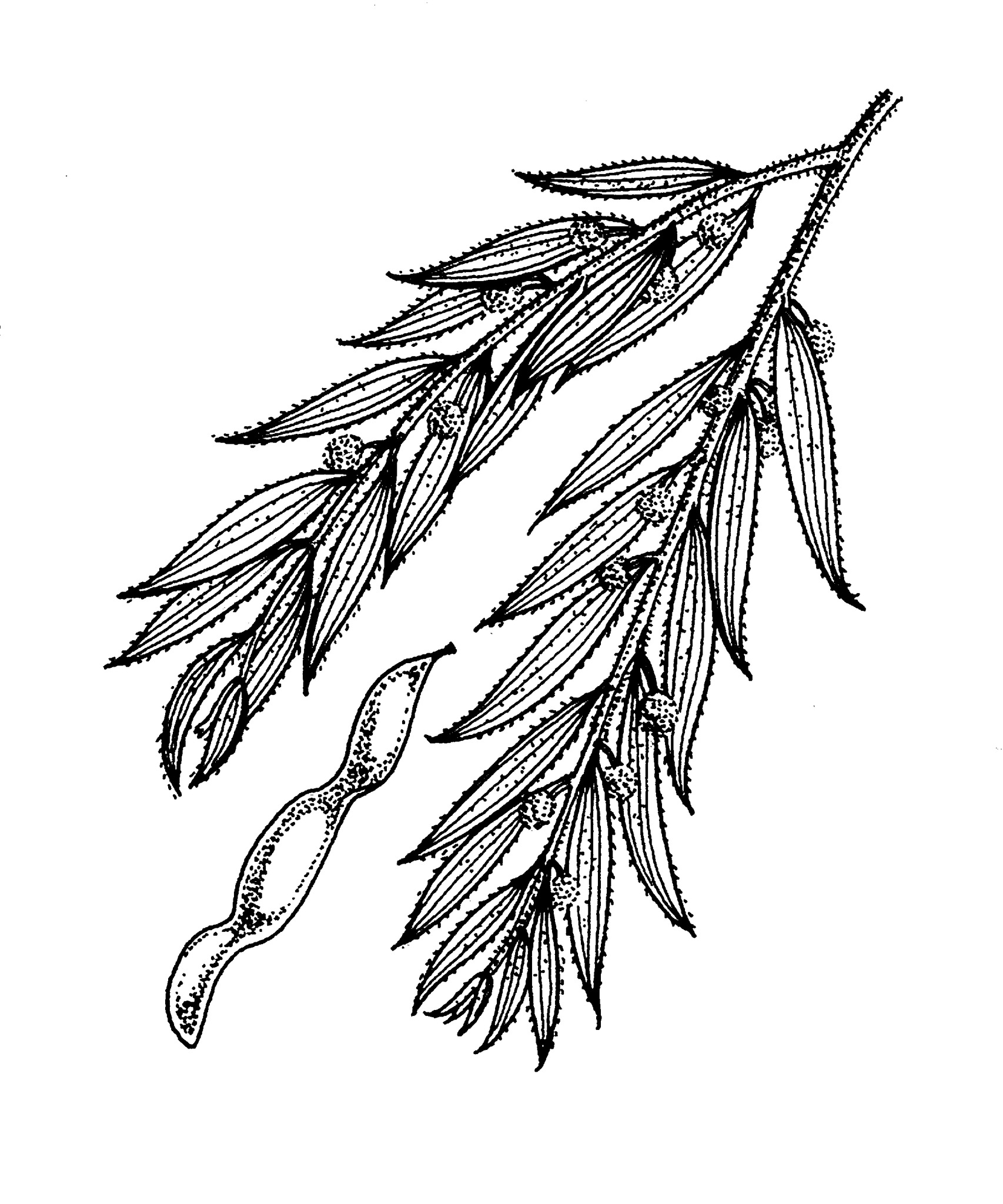
Shrub or small tree with thin, pendulous branches. Phyllodes narrowly elliptic to lanceolate,1.5-2.5 cm long, 4-8 mm wide, often sticky, especially when young; veins 2-4. Flower heads globular of 12-20 flowers, pale yellow; spring. Fruit pods narrowly oblong to linear, to 6 cm long, 4-5 mm wide.
A prostrate form is available. Other available wattles with simple inflorescences include the following: A. ausfeldii Regel from NSW and Vic, Ausfeld's Wattle (Whipstick Cinnamon Wattle), a sticky shrub with the leaves dotted with oil glands and the branchlets resin-ribbed; A. flexifolia Benth., Bent-leaf Wattle, from Qld, NSW and Vic with phyllodes kinked near the base; A. farinosa Lindl.,Mealy Wattle, from SA and Vic with a characteristic mealy-white covering on the young stems and flower cluster stalks; A. glandulicarpa F.M. Reader, Hairy-pod Wattle, from Vic with phyllodes less than twice as long as wide and the midrib in the middle; A. lanigera A. Cunn., Woolly or Hairy Wattle, from NSW and Vic, with branchlets, phyllodes (which have several strong parallel veins) and pods covered in thick, woolly hair; A. leprosa DC., Cinnamon Wattle, from NSWand Vic with phyllodes often sticky and gland-dotted, 3-12 cm long, and pale yellow flowers; A. sclerophylla Lindl., Hard-leaf Wattle, from WA, SA, NSWand Vic, a sticky shrub with stiff phyllodes 1-3.5 cm long with several longitudinal but no marginal veins and flower heads mostly in pairs; A. venulosa Benth. from Qld and NSW with thick, slightly sickle-shaped phyllodes with some hair and flower stalks short and bearing large yellow flower heads; A. verniciflua A. Cunn., Varnish Wattle, from SA and E Australia with characteristic varnished leaves with 2 prominent veins; and A. victoriae Benth., Bramble Wattle (Elegant Wattle, Gundabluey), from all mainland states, with more or less straight, pale green phyllodes 2-8 cm long, often with spiny stipules, and flowers pale yellow to almost white.
Vic.
Source: (2002). Mimosaceae. In: . Horticultural Flora of South-eastern Australia. Volume 3. Flowering plants. Dicotyledons. Part 2. The identification of garden and cultivated plants. University of New South Wales Press.
